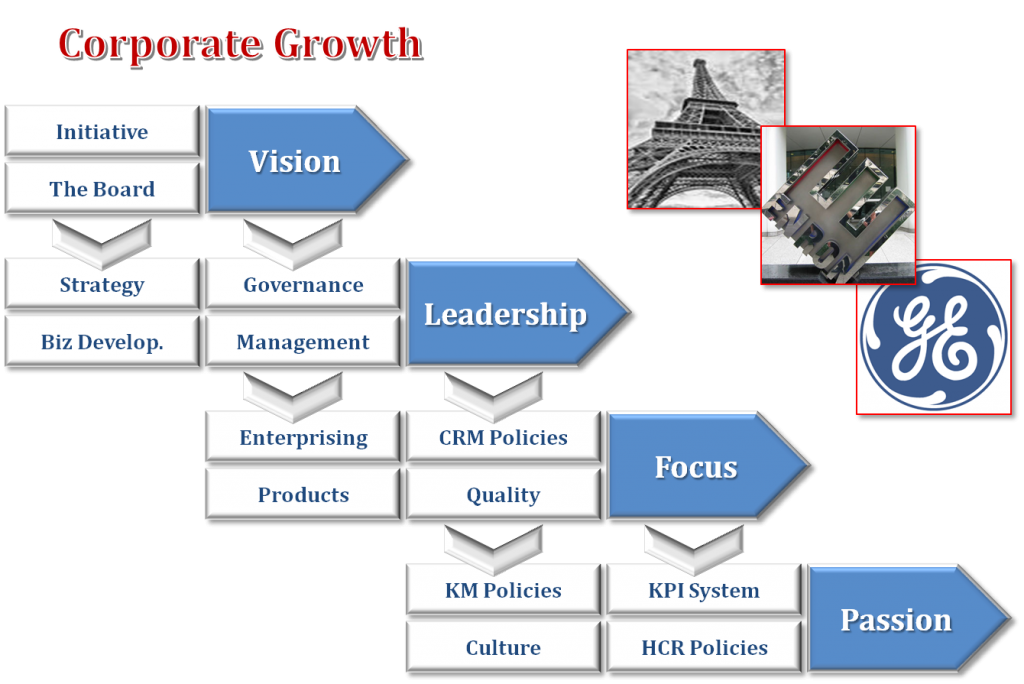PHILOSOPHIES AND REALITIES OF DELIVERY
The diverse technical and managerial expertise had amazingly exposed remarkable multicultural, multipurpose and multidimensional work environments.
The vision on PMO/Portfolio Management (Corporate, Project and Enablers) addresses the grassroots (Scope, Time and Cost) to assure a comfortable success (Performance/Quality) rather than the controversial definitions of both targets and deliverables. On parallel, the advanced managerial themes are extremely effective to elevate the performance:
Firstly; Neo-Director is a Mentor and/or a facilitator rather than an expert. Staffs are the mighty energetic delivery engine; who require continuous incubation, benchmarking, growth, and control.
Secondly; Strategy is set in Synergy to capacities and business/commercial vision; not for quick wins or temporary trends. It sustains the fine balance between visionary propositions and factual statistics.
Thirdly; Board of Directors, Trustees, or Management should solely be a catalyst for corporate growth, business sustainability and transparent accountability. Ideally; the safety gear between Management of Corruption and Corrupted Management.
Fourthly; Urbanism is the Critical Economic Driver; while civic growth is the guardian on scope. The use of Audit and Control tools should associate good governance and Legitimization.
This approach is based on four principles, associated with typical management knowledge zones and practices:
Scope Verification and integration across technical, financial and legal platforms
Delivery Control by conditions precedent, KPIs, and RRM
Procurement Control by procedures enforcing efficiency, compliances and competences
The sacred trio formulas of Legal, Financial and Technical compliances and gauges
During the last few years, both government and business endeavors were packed by eloquent statements; yet could not establish sanctuaries against market extremism and communications violence.
Confronting the Inadequate supply, breaking the cycles of urban frustration, restructure the financial immaturity, and restoring both public and professional confidence; are the imminent road mapping for any strategist, planner and/or executive.
The Management tools are a blessing to assess and motivate the team to deliver, not to suppress and terrorize. Human depth tells how staff are equal, yet some are distinct..
REFERENCE
Management in all business and human organization activity is the act of getting people together to accomplish desired goals and objectives. Management comprises planning, organizing, staffing, leading or directing, and controlling an organization (a group of one or more people or entities) or effort for the purpose of accomplishing a goal. Resourcing encompasses the deployment and manipulation of human resources, financial resources, technological resources, and natural resources.
Mary Parker Follett (1868–1933), who wrote on the topic in the early twentieth century, defined management as “the art of getting things done through peopleâ€. She also described management as philosophy. One can also think of management functionally, as the action of measuring a quantity on a regular basis and of adjusting some initial plan; or as the actions taken to reach one’s intended goal. This applies even in situations where planning does not take place. From this perspective, Frenchman Henri Fayol considers management to consist of seven functions: Planning, Organizing, Leading, Co-ordinating, Controlling, Staffing and Motivating. Towards the end of the 20th century, business management came to consist of six separate branches, namely:
 Human resource management
 Operations management or production management
 Strategic management
 Marketing management
 Financial management
 Information technology management responsible for management information systems

